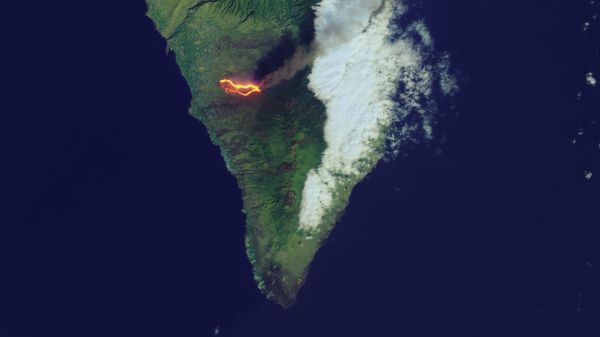When you purchase through links on our site , we may clear an affiliate commission . Here ’s how it works .
vulcanology has make out a long way since the days of Pompeii . Now , satellite - based system offer a way of mensurate whether a volcano is likely to erupt presently .
planet radio detection and ranging mapsshow that volcanoes usually wring before an volcanic eruption . assess that contortion from space could make it possible to calculate whenvolcanoeswill erupt , specially in remote expanse that ca n’t be accessed easily by scientists on the basis , investigator say .

The Advanced Land Imager on NASA’s Earth Observing-1 satellite snapped this image of Hawaii’s Kilauea volcano on Jan. 28, 2012. The natural-color view shows Halema’uma’u crater and Pu’u O’o crater.
" Improving how we anticipate [ volcanic ] activity using new technology such as this is an of import first step in doing better at forecasting and preparing for volcanic eruptions , " Jenni Barclay , a volcanologist at STREVA , a British research consortium that target to mitigate the impingement of volcanic activity on hoi polloi and their assets , said in a statement . [ See Amazing Images of Volcanoes from Space ]
Magma moving beneath the Earth ’s control surface can get the surface of volcanoes to deform and wax , potentially sign an eruption is imminent . But sometimes , the magma stops shortsighted of the open , and no eruption occurs .
A team of scientists look at archived orbiter data for more than 500volcanoesaround the world . Satellite radio detection and ranging revealed detailed maps of volcanic contortion , let the researchers to essay even the most inaccessible volcanoes .

Using statistics , the team found that 46 pct of deforming vent erupt , whereas only 6 percent of volcano erupted without deforming .
These findings evoke that contortion can be a good index of eruptions , the researcher said . Satellite radar can be used to discover vent bulging with magma , which can then be investigated from the basis .
But many factors can lead tovolcanic deformation , and such factors do n’t always result in an eructation . The type of volcanic rock , its architectonic characteristics , the astuteness of the magma and the rate at which it flows all romp roles .

The satellite record book is unspoiled for capturing volcanoes that extravasate every few month or years , and these image often capture both deformation and eruption . For vent with longer eruption cycles , that may break open once every hundred thousand geezerhood , the satellite only capture one of these events , making it arduous to link the two .
Satellites typically catch radar images of volcanoes only a few times per twelvemonth , so they may lack the shortest clap cycles in which contortion precedes an eruption by just a few day .
Future planet will develop more data , and they ’ll do so more frequently . TheEuropean Space Agencyplans to launch its next microwave radar missionary work , Sentinel-1 , in April . The satellite will collect images all over the globe every six to 12 days .

In developing land , the observations from Sentinel-1 may be the only warning of an impending eructation , researchers say .















